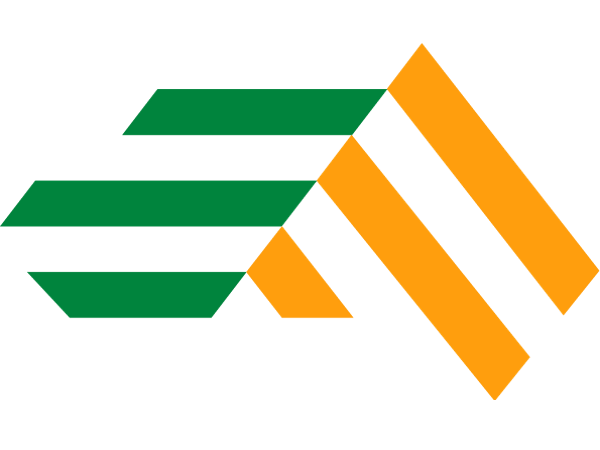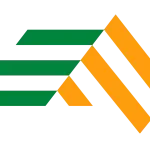Before you start your climb to the top of the ranked ladder, here is everything you need to know about the LoL Ranking system.
We cover all the essentials about LoL Ranked Play: from how the ranks and tiers work, to the tips and ways to quickly rise up the divisions.

© Riot Games
All League of Legends Ranks – in Order
The LoL ranking system can be split into two areas: divisions and tiers. Divisions can be represented as entire floors, while tiers are small steps within such divisions. At the start of the second ranked split in season 13, Riot has added one additional division to a total of 10 divisions, with the first seven having four tiers within. Below is the complete list of all the LoL ranks in order:
- Iron (l, ll, lll, lV)
- Bronze (l, ll, lll, lV)
- Silver (l, ll, lll, lV)
- Gold (l, ll, lll, lV)
- Platinum (l, ll, lll, lV)
- Emerald (I, II, III, IV)
- Diamond (l, ll, lll, lV)
- Master
- Grand Master
- Challenger
What is the distribution of ranks in LoL?
Below are the percentages of the players placed in each rank. Data is taken from leagueofgraphs.com on February 5, 2025.
- Iron – 6.8%
- Bronze – 18%
- Silver – 18%
- Gold – 20%
- Platinum – 19%
- Emerald – 11%
- Diamond – 4%
- Master – 0.30%
- Grand Master – 0.053%
- Challenger – 0.012%
The introduction of the Emerald rank had the goal of evening out the distribution towards the middle. Based on the data we have so far, it looks like the goal has been achieved: the large majority of the player base ranges between Bronze and Platinum, with the highest tiers maintaining more or less the same percentages.
Image Credit: Riot Games
LoL Ranked Distribution before Emerald
If you’re curious to see how the distribution for ranks in LoL was before the addition of Emerald, here are the latest percentages taken:
- Iron – 5.5%
- Bronze – 24%
- Silver – 29%
- Gold – 24%
- Platinum – 12%
- Diamond – 3.1%
- Master – 0.49%
- Grand Master – 0.045%
- Challenger – 0.019%
How does the LoL ranking system work?
LoL Ranks explained – it’s all about MMR
Depending on past performance, each player also has a system-generated “MMR” (matchmaking rating). While this rating is not directly displayed, it’s the most important indicator in the game since it helps the ranking system assign players fairly, allocating people of similar skill levels together. It also helps determine the level of “LP” loss/gain depending on whether you win or lose. For example, getting a winning streak will increase your MMR above the average for your division/tier, granting you higher LP gains when winning. This is because the system aims to accelerate the promotion of better players, reducing the impact of smurfs.
That said, winning many games in a row can also mess up with the MMR since the game doesn’t want you to immediately rush to your peak elo. The League of Legends ranking system is meant to make you climb at a “fast, but no so fast” rate. Otherwise, players would be incentivized to always run on smurfs and climb with a fresh account that has no past MMR.
Wanting to improve your rank and know how do LoL ranks work? It’s all about game knowledge. You can read all the latest League of Legends news regularly at our site.
What are ranked points (LPs)?
The ranking system is based on set divisions/tiers as mentioned above. Players will earn LP points upon wins, and lose them whenever they lose. With each tier having 100 LPs, the moment a player goes above the threshold is immediately promoted to the next tier. This happens when going from the fourth tier of a division to the first one.
In previous years, players would be placed in the promotion stage when reaching 100 LP in the first tier of any division. To reach the next division, players were required to win 2 out of the next 3 games played. This number was increased to five whenever players were placed into a promotion series between two ranks.
Starting from last year, however, Riot decided to remove promos across the board, so there will be no more promos in the future. It should speed up the climbing process but it also might have some repercussions, especially if the demotion shield will still be active (you don’t demote immediately if you hit 0 LP).
This further increased the pace at which players have been climbing the ranks in League of Legends.
The difference between SoloQ and Flex Queue ranks
There are two ranked queues in LoL: SoloQ and Flex Queue. The former is the traditional queue where players are given the chance to showcase their individual worth. Flex Queue, on the other hand, puts more emphasis on team coordination since players are given the possibility to queue together, even as 5 players.
Flex Queue was introduced to replace the old 5-man queue which was only accessible to players all belonging to the same lobby. Now, flex queue can be made by small parties, reducing the queueing time while maintaining most of the positive aspects of team play.
From a prestigious standpoint, the ranks in SoloQ are still the ones most players regard as more important. That said, if you’re strong enough, getting a high rank in Flex Queue can also mean that you’re more prone to being a strong team player.
How to climb ranks
Average LoL ranks – what is the average rank in League of Legends
The majority of the players have always found themselves between Silver and Gold so these are the two average ranks in LoL. This hasn’t changed with the introduction of Emerald, even though it evened out the curve in the middle, with Bronze and Platinum also increasing their percentages.
Tips on how to get an S rank
At the end of each game, Riot has a separate system that evaluates your individual performance at the conclusion of every game. Better performance in-game will yield greater “champion mastery” gain. The system will also determine a grade based on your performance on the set champion in a role compared to other players.
Grades range from:
- S (+, normal, -)
- A (+, normal, -)
- B (+, normal, -)
- C (+, normal, -)
- D (+, normal, -)
Grading has not shown to have any impact on lp loss or gain in the LoL ranking system.
Additionally, getting an S grade is needed to upgrade your champion mastery to Tier 6 or Tier 7. In order to achieve this, you have to play better compared to other players playing the same champion. Areas known to contribute to grading include kills, deaths, assists, creep score and vision score. Additionally, given grading is champion and role-specific. Champions with that average high kills like Veigar and Pyke have a much higher difficulty to attain an S grading on.
ELO and High ELO explained
What is ELO in LoL?
ELO simply refers to the ranking/rating system. In the case of League of Legends, when somebody mentions ELO, it refers to your rank or your general skill level. The term is borrowed from Arpad Elo’s system which is commonly used in chess. Players are rated between 0 and 2200+ on the “Elo scale”. The higher your ELO the higher division you are expected to be.
In LoL, ELO is only shown once you get to Master or above. At that point, there are no more tiers for these divisions, and the ELO is the main indicator to show how well a player is performing.
What is high ELO?
High ELO is quite a subjective term that players use. In most cases, high elo players are the ones that belong at the very top of the ranked ladder, meaning they are either Grandmaster or Challenger.
That being said, a Master or even Diamond player can be considered high Elo, especially if you consider it in distributive percentages: being in the top 5% of the player base definitely sounds premium, right?
Is Platinum 1 high Elo?
Ever since Emerald was added to the game, Platinum 1 can no longer be considered high Elo. This is because Plat 1 is statistically the top 14% of the ranked system.
Tips on how to climb the ladder and reach high elo
The best way to rise up the ranks is super simple: win more games than you lose. You need to win games to improve your MMR and climb the divisions. Learn from your mistakes and always try to ask yourself what you could have done better. Don’t focus on other players’ mistakes and try to stay cool with your mental. As someone who used to tilt a lot while playing, make sure to take breaks so you can fully focus on your gameplay.
Tired from grinding the ranked ladder? Try out a new aspect of League, Fantasy LoL.
What rank is Faker?
Faker is a legend in the League of Legends scene, being acknowledged as the best mid laner and player in the world for multiple years. While Faker may not be considered the best nowadays, he remains among the very best in both the competitive scene and the solo queue ladder.
The League of Legends ranks of competitive players change throughout a season as not many are active on the ranked ladder. Rank decay is common as many competitive players refrain from solo queue for a multitude of different reasons. These reasons include not wanting to give away tactics, and not having enough time given their busy schedules scrimming other teams and reviewing VODs.
To no surprise, Faker from year to year has managed to achieve Challenger, the highest rank available in League of Legends, by the end of every season. While he may not always be on the challenger leaderboard, for the reasons mentioned above, he continues to finish the year at the highest division of the LoL ranking system. On some occasions, the superstar has even managed to claim the Rank 1 spot on the Korean ladder, which is considered to be one of, if not, the most difficult achievement for SoloQ players.
Interested in improving? Check out how to be a Pro LoL Player.










